While the Ethereum (ETH) blockchain is seeing a decline in usage as a result of a general decline in cryptocurrency prices, mining is hitting record highs. As the Merge approaches, ecosystem players are taking advantage of the last few months where it is possible to accumulate ETH through proof-of-work.
Mining on Ethereum is breaking records
On Saturday, June 4, the difficulty of mining on the Ethereum blockchain reached an all-time high. According to Etherscan’s data, this difficulty rose to 15,089.793 terrahashs (TH).
The higher this value, the more difficult it becomes to mine a block on the network. Thus, this metric is an increasing function of the computing power deployed by all miners, in order to ensure the stability of the blockchain.

Figure 1: The difficulty of mining on Ethereum
As Figure 1 shows, since the Chinese ban last summer, the difficulty of mining has been increasing as new miners join the network. In fact, the computing power deployed by these miners also reached a new record this Saturday, according to CoinWars.
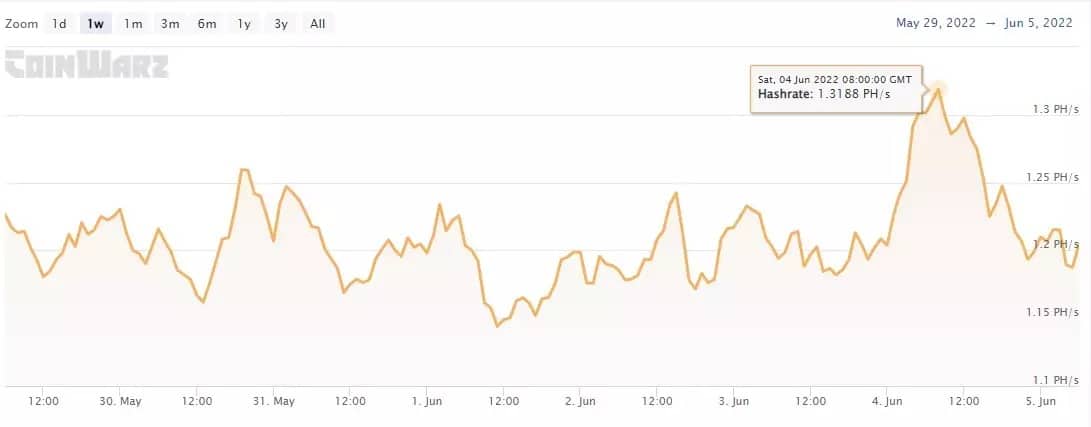
Figure 2: The Ethereum hashrate
The hashrate, as it is called, would have peaked at 1,318 8 petahashes per second (PH/s). The conditional is used here, as Etherscan returns a daily average value of 1.08 PH/s and does not offer an intraday graph to compare the data.
Nevertheless, this does not take away from the fact that May was a record month for computing power deployed by miners on Ethereum, and that June seems to confirm the trend.
Network usage follows the decline
Ironically, while competition between miners has never been so fierce, the network, meanwhile, is seeing its usage fall to annual lows with 401,055 active addresses on the day of June 4. You have to go back to 10 December 2020, with 381,124 active addresses, to find a lower value.

Figure 3: Active addresses on Ethereum
June 4 also sees a yearly low in the number of daily transactions, for a total of 1,029,121. As with the number of active addresses, Figure 4 shows us that we also have to go back to the end of 2020 to find lower values. Namely on 29 November 2020 for 993,930 transactions.
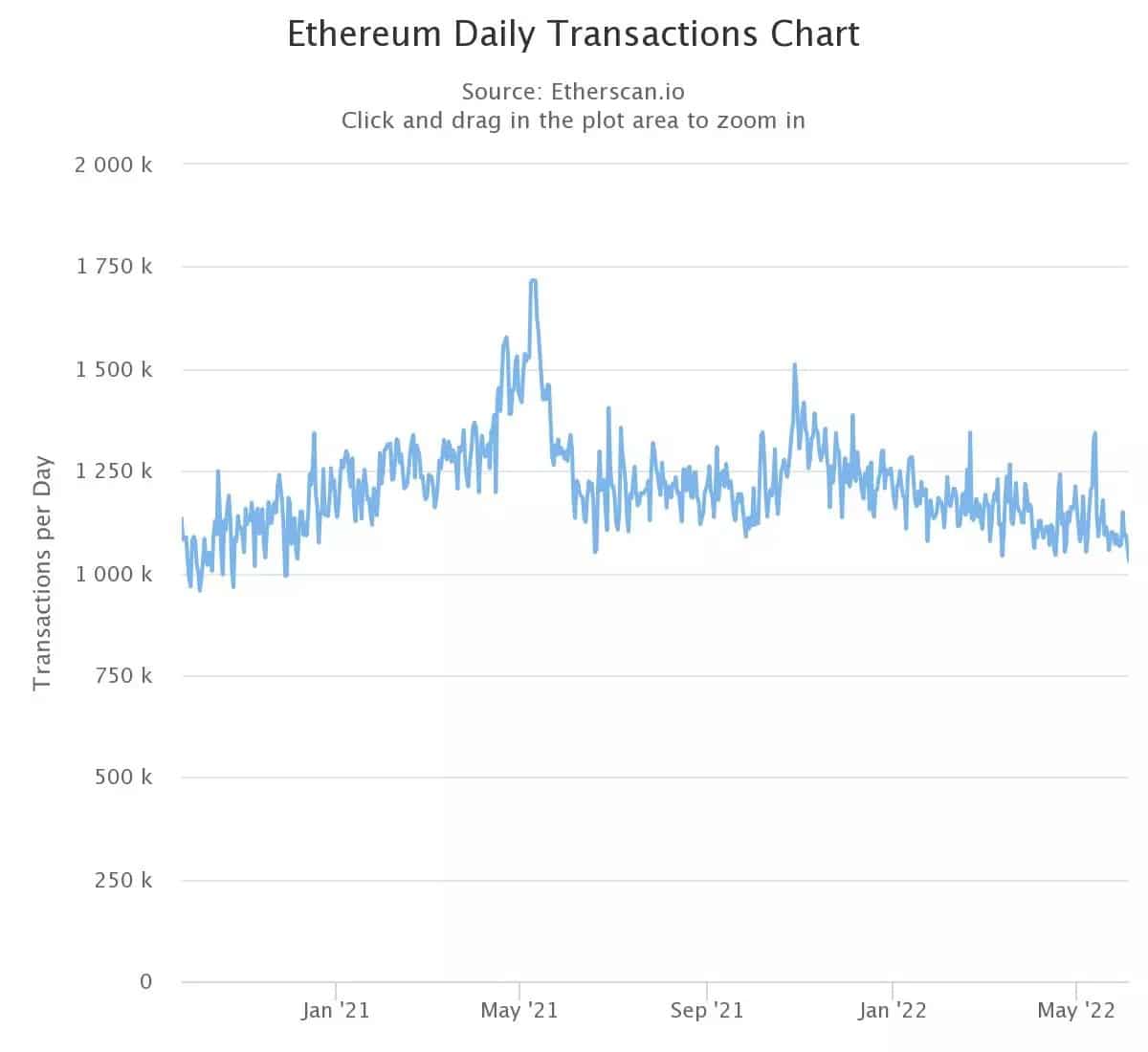
Figure 4: Number of daily transactions
This downward trend in demand for the Ethereum blockchain benefits these users. Indeed, the price of transactions is particularly low in recent months, compared to what was seen in the heart of the bull run.
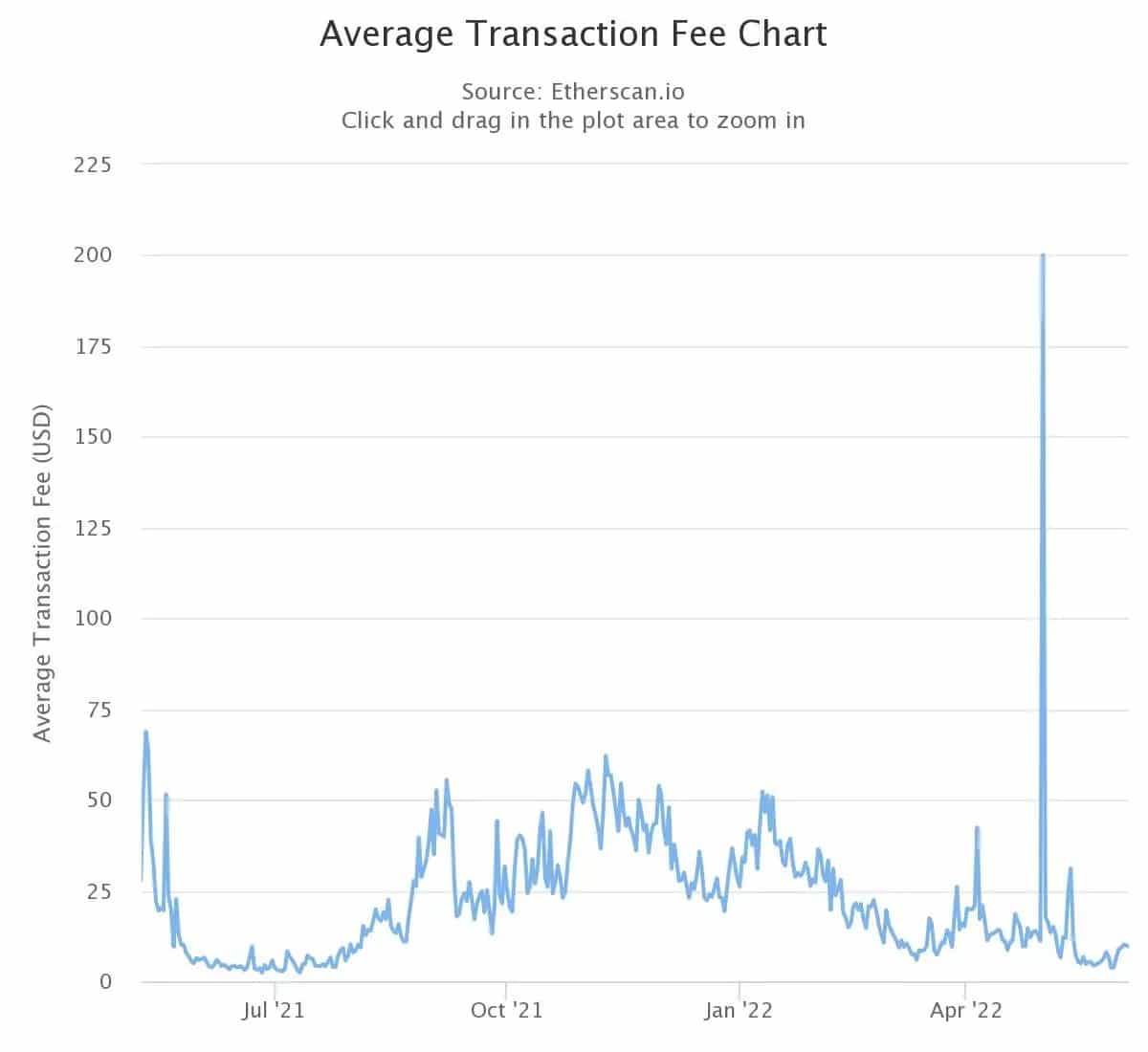
Figure 5: Average transaction price
On 28 May, the average price of a trade was $3.73, the lowest since 11 July 2021 when it was $2.43.
The statistical aberration visible in Figure 5, bringing the daily average to $200.06 on May 1, corresponds to the release of land for Otherside, the Yuga Labs metaverse.
The upcoming arrival of the Merge
The decline in network traffic is not exclusive to Ethereum. Rather, it follows a general trend, due to falling prices themselves, scaring away investors.
Like other cryptocurrencies, ETH is currently working a hinge zone, which was also defended at this time last year. This zone is around $1,800.
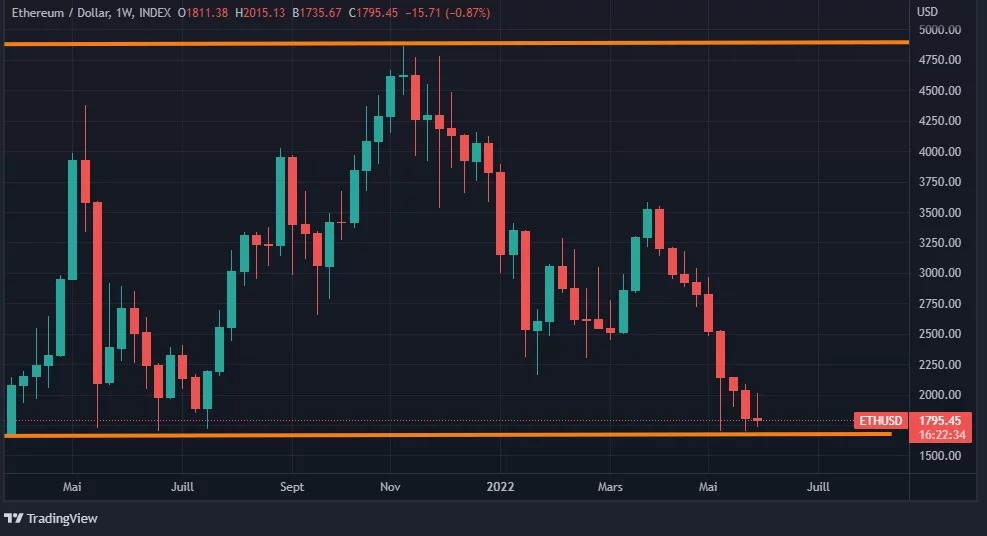
Figure 6: ETH price
A popular idea in the ecosystem describes that the ETH price could rise again as Ethereum moves to a consensus proof-of-stake (PoS): the Merge.
This idea is defended by a future drastic decrease in the rewards attributed to each block generation. Coupled with the burn mechanism, implemented last August with the integration of EIP-1559, this historic change would be the equivalent of three halvings on the Bitcoin network (BTC) in terms of inflation reduction.
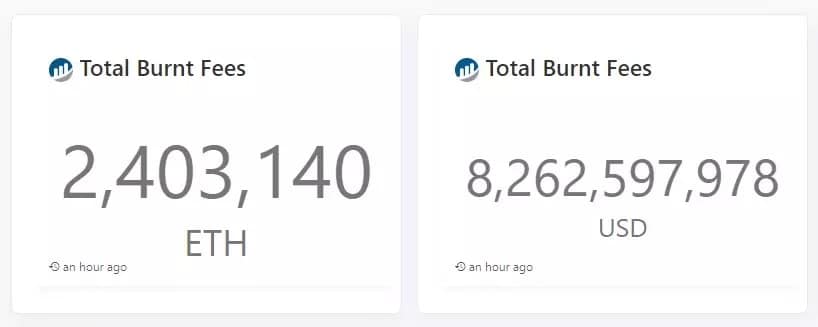
Figure 7: Number of ETH burned since the implementation of EIP-1559
With 2.4 million ETH already burned, the scarcity of the asset will tend to decrease further, provided the consensus shift goes well.
One can then understand Ethereum’s recent records on mining. Miners are indeed taking advantage of the last few months when it is still possible to accumulate ETH through proof-of-work (PoW), before this activity stops.
However, there is no guarantee that the Merge will drive prices up. Firstly, it will depend on the overall health of the ecosystem, but it should also be borne in mind that 10% of all ETH in the network will return to circulation.
The staking contract for Ethereum, 2.0 set up on 3 November 2020, has indeed almost 12.8 million ETH. These will be released some time after the final adjustments, once the switch to proof-of-stake has taken place. Investors may well choose to take profits, driving the price down.
